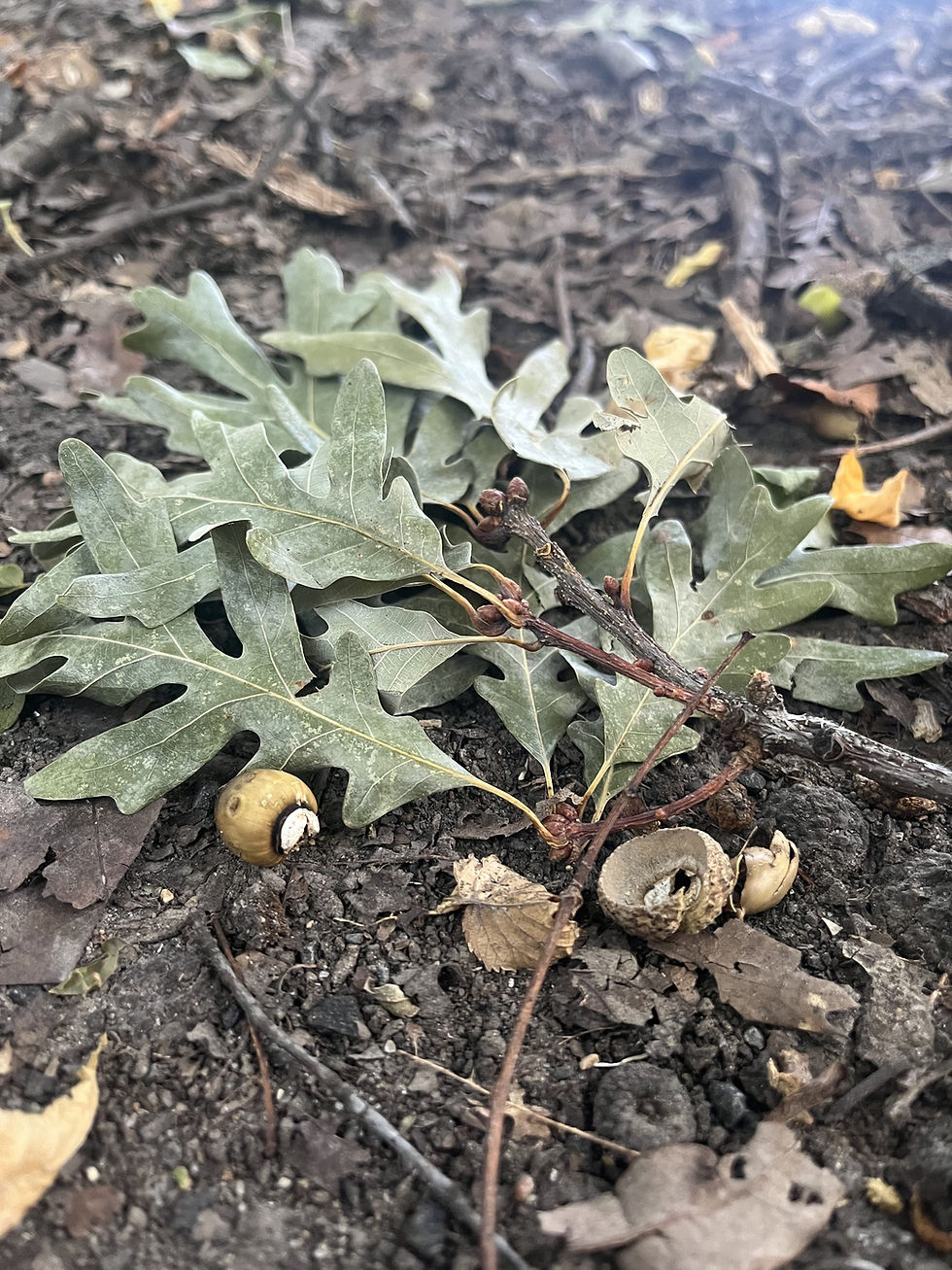Connecting to nature by creating
- Dana Perry
- Sep 15, 2023
- 4 min read
Updated: Nov 1, 2023
by Dana Perry
Here come the leaves
On the first day of autumn, sweaters emerge from where they have been hiding. The change in season becomes the topic of conversation for all the humans you encounter through your day. It’s here, they say, neighbors, grocery store checkers, random people on the street, whispering under breath. Maybe with a sigh of relief, a reason to snuggle up, sip a tea made with our cozy warming spices, clove, cinnamon, cardamom, (the herbalist version of a pumpkin spiced latte); or maybe a slight hint of the ominous. Autumn, though refreshing with it’s breeze and delightfully colorful in its reds and oranges and yellows is a reminder that winter is right around the corner, after all. Cold is looming.

Everything has that back-to-school smell, and students, vulnerable and tender, are entering back into the classroom space, summer-kissed skin touching cold air. A strong reflective opposite of spring, autumn instead holds the long view: the way-way-way-in-the-future inkling, the promise of something, but also the not quite sure what it might be yet. The unlabeled seed packet in the back—was it lettuce or lemon balm? Maybe some sort of wildflower blend? You’ll have to wait nine months to see, whether or not it overwinters, what might sprout when the snow melts off. We only know that the seed will be planted, by bird or squirrel or human hands.
Flower hunting
At the Brooklyn Botanic Garden last week, my daughter and I played flower hunter. One of our favorite games, we scan areas of plant growth, excitedly spotting various little rainbow sparks throughout vast swaths of green. Passing by a series of steps that form a bridge across the pond, she pointed, spotting a gorgeous arm of goldenrod (Solidago spp.) that appeared to be dancing. Bounding (as quickly as her three year old feet in rain boots could take her) to the brilliant yellow, upon arrival, she stopped in her tracks, pulling away. Then I saw what she saw: the goldenrod wasn’t dancing from the wind, but instead heavy with bees, being dragged to the ground with pollinators. Various-sized stripes and patches of black and yellow, there were nearly 15 of all shapes and sizes on a single stalk, the fuzzy bumbling kind, those with sleek backs.
“Oh no, bees,” she whispered, hurrying back to her wagon, me close behind.
She’s been a bit wary of insects since July when her tiny hand accidentally clasped a stinger. I took a moment to remind her that bees are often just as startled as we are.
“They’re not interested in us,” I said, “they’re just confusing humans for flowers.”
She stopped, taking a moment to mull it all over (as three-year-olds do). Curiosity overtaking fear, she looked up to me with a serious determination.
“Let's go back,” she said, “only this time, you hold me.”
So we did. This time, my larger arms around her little arms, we watched our friends as they engaged in their critical work. She gingerly pointed to their fuzzy backs, quietly asking me if we could see their mouths, what pollen tastes like, and why their bums wiggle.

In essence, to become a plant person means to center the natural world, an action that inherently de-centers the human one. The world that we have spent the last few thousand years or few millennia or so (depending upon who you ask) constructing. This can be a deeply vulnerable and destabilizing process.
In a certain understanding, to become one with the plant world might mean tossing off all the contrived human bits: the artificially prescribed schedule of productivity, processed food, fast fashion. But in my own experience with it—and for many of those I’ve been lucky enough to witness experiencing it—in other ways it can draw us closer to the the thing that arguably makes us the most human of all: our own creations, visual art, dance, the written word. As we move closer into the nature that surrounds us, it often goes hand in hand to feel a deeper need to connect with our own artistic selves (also, herbalists really go wild over a cheesy plant metaphor).
Nature as a holding place
Within this blog space, we plan to share all the things you might expect from an herb school, such as creative ways to incorporate herbs into your daily life, plant energetics and formulations, and relevant information related to the corporal human body and the larger earthy body. But it is also our hope to go deeper, to create a place to remain curious, reflective, and questioning. We hope to share the experiences of the students, alumni, staff, and visiting faculty and friends at all parts of this juncture where we sit: where humans collide with the natural world. Maybe we can contemplate just how far our social conditions have caused us to stray from our original home, and how we might find our way back.
We hope it can be a place to hold these thoughts and experiences exactly as they are with delicate and loving arms; or maybe a place to reflect upon just how much nature—and the cycles that exist within our turning planet—instead are actually holding us.
Dana Perry is a teaching assistant and blog manager at ArborVitae (and also a proud alum). She lives in Brooklyn, New York.






